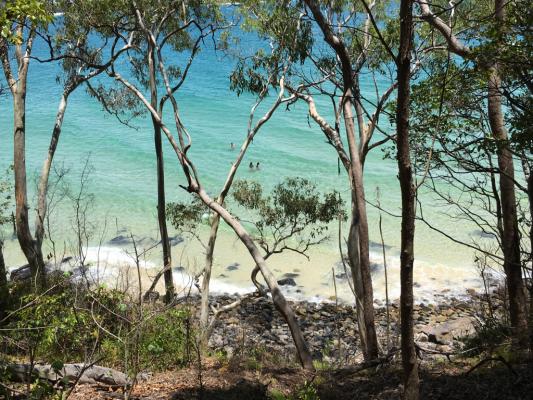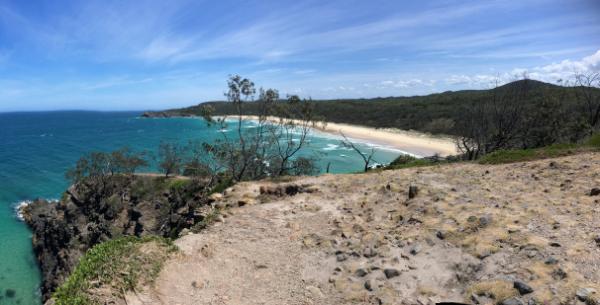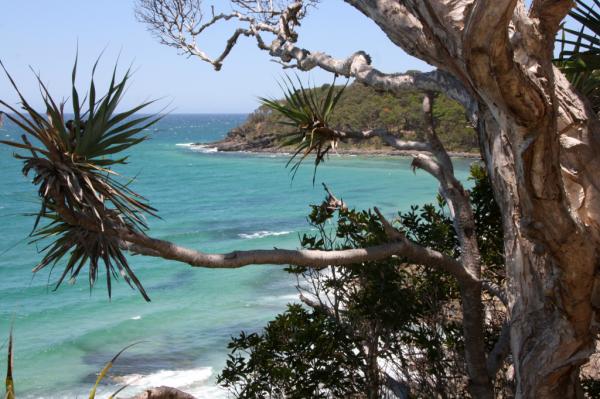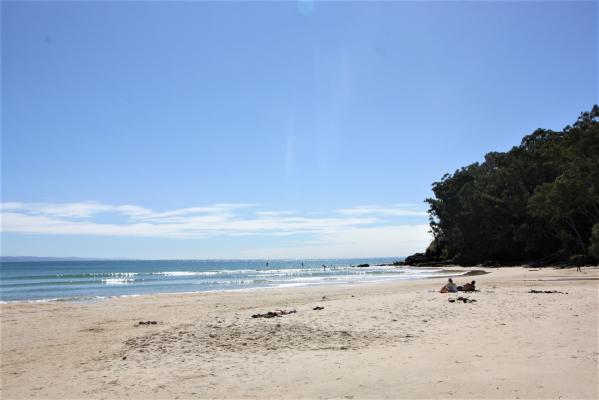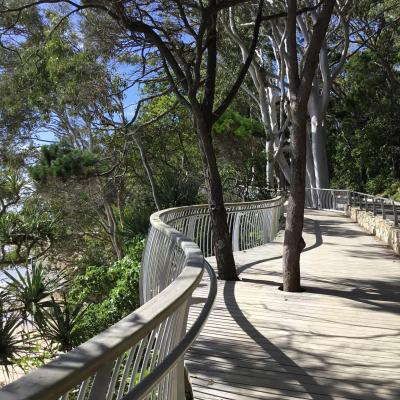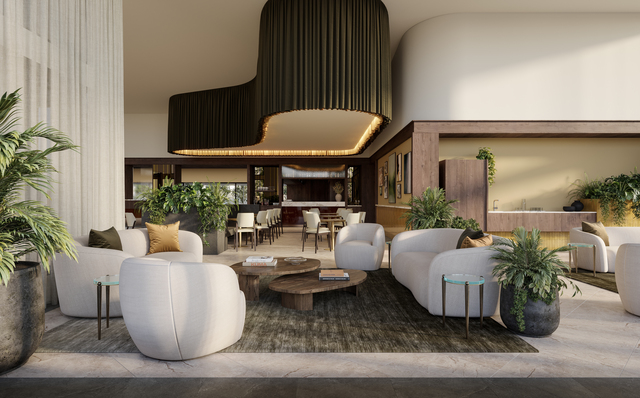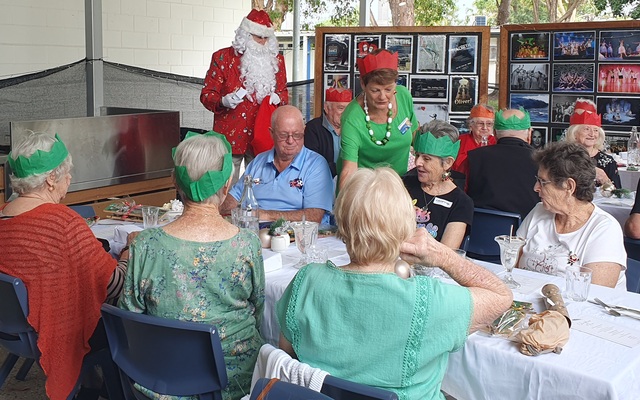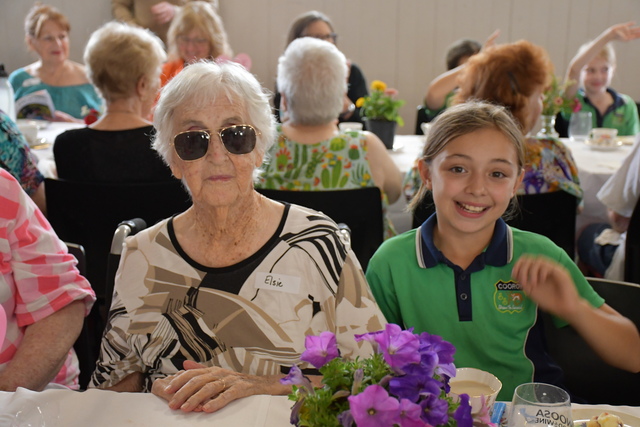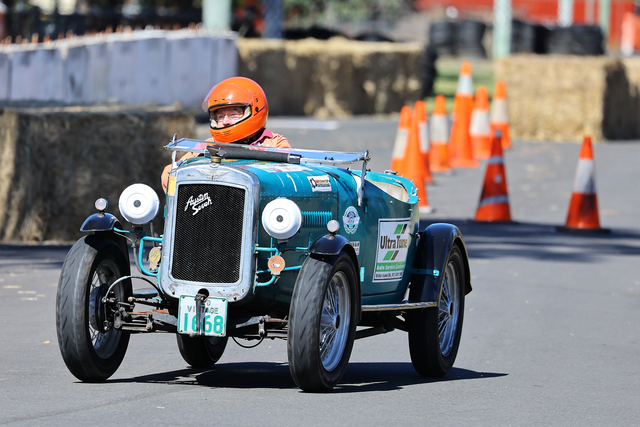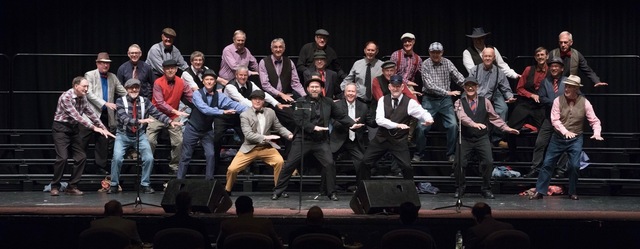Warm water, warm air and the sound of cicadas in the trees. Tropical was overdone.
On our first visit to Noosa in the ’70s we surfed until late in the afternoon. Until the sun sank like a fiery red ball behind the mast and spars of the yacht moored 100 metres or so away in the shelter of Laguna Bay.
The first thing we notice this time, at the start of our coastal walk from Noosa Head to Caloundra Head, was how the sand has built up inside First Point, creating a clean surf break … even at Little Cove and at the national park.
The beaches have seen so much change over the years, from deep erosion caused by cyclonic storms to the sand pumping and replenishment programs.
They play such an important part of Australian life … whether feeling the sand between your toes or the sun on your skin, the exhilarating freshness of salt water and the physical well-being from swimming.
The beach is where everyone can go. It reflects our egalitarian nature.
And the beachfront carpark allows anyone and everyone, especially those with a disability, to sit and enjoy the beach.
From here you can take the 200 steps to Upper Hastings Street or choose the boardwalk that hugs the coastline past First Point.
Keep a look out for koalas, as you can sometimes see them during the day asleep in the fork of a eucalypt tree.
The beauty of Noosa unfolds before us, and it is protected from the southerly change that has been around for a couple of days.
Little Cove is one of those places you fall in love with at first glance.
A gentle sea breeze, the luminescent blue-green colour of the water, the filtered glimpses of the ocean and Noosa’s North Shore through the trees.
Not wide, open views. Subtle. A beautiful blend of light and shade.
Heading towards the national park entrance, there’s a group of young people taking a selfie from the last point before the gate.
I tell them that was the spot one of the great surfing photos was taken, in the 1960s – by John Witzig and it was of Bob McTavish beside an FX Holden with a perfect line-up of waves in the background.
On the corner opposite, where Coco’s restaurant once stood, is now a new residential development.
And you can grab a coffee at the information centre inside the park itself. The Noosa Wave. Wasn’t that the name of the take-away shop just outside the national park gates … the one we used to get a hamburger and a milk shake from in the 1970s?
Take the time to sit here beneath gum trees and the pandanus palms. Rest and reflect on those who have been here long before as well as the times we have enjoyed in what would have to be one of the most interesting places you could imagine.
Respect the environment … the plants, the birds, the animals. Respect the dreamtime spirits.
I remember television and radio presenter Hamish McDonald speaking at an Australian Institute of Architects evening.
He reminded us that the welcome to country dates back thousands of years. It shows respect, not to enter someone’s home until invited.
It’s also a chance to build relationships, share knowledge. After all, our land is our heritage.
As a journalist, McDonald said, we look for pictures.
No matter where, among the first things we notice is the buildings. The homes, the churches.
We see inside those places.
They give shape to the place, identity to the people.
They give shape to the place, identity to the people.
Our buildings tell the story of our place.
This is a place of optimism. Exciting, bold and adventurous.
We need to acknowledge the diversity of the people who call this place home.
They provide so much inspiration for what makes this country.
And this pathway through Noosa National Park is one of the best you could wish for.
It leads past so many coves and beaches, rock pools and cliffs. Through all shades of green as the trees at times form canopies and at other times it weaves among open native grassland.
The first few kilometres are wheelchair friendly but not after that.
There are toilets and some drinking water at the start and at Ti-Tree Bay but beyond that you need to carry your own water.
Ti-Tree was such an exotic surfing spot for young surfers in the ’60s. Away from Main Beach, First Point, Johnsons and National.
The Boiling Pot, Dolphin Point, Fairy Pools and Granite Bay are some of the landmarks. Then you come to Noosa Head itself and Hells Gate was where you could come face to face with the extreme elements … the glorious days and those filled with cyclonic conditions.
The headland is bold, exposed, rugged. The ocean is deep blue. There is the stunted growth of trees and grasses. And in the background, the bushland bird song.
Writing in Surfing World in 1967, surfer Dr Robert Spence captured what it must have been like to experience the full force of nature.
“Australia Day weekend in 1967, Cyclone Dinah swung down the coast from Townsville.
“By January 29 it was 60-80km off Noosa Head.
“Giant waves exploding against the cliffs at Noosa Head and Hells Gate.
“The twisted wash off Hells Gate steered the mountain of water into the air.
“There was time for us to yell a warning to one another then throw ourselves against the trunks of trees as the lip of the wave exploded in the cyclone twenty feet over our heads.’’
From here, you drop down to the curve of beach at Alexandria Bay, but the conditions here can sometimes be dangerous for swimming.
This is the 4.5km mark. Then the path continues up over a headland and on to North Sunshine Beach. Stone steps lead down to the sand.
Look up the steep sand dunes to some exceptional houses.
Sunshine Beach village is a further 1.3km. It has been an 8km walk in one hour 40 minutes of moving time … but add half hour for a cup of tea and sandwich. Longer if you have a swim.
It’s a journey well worth taking. I had forgotten how good it can be.
Visit Adventure Sunshine Coast for detailed information on various sections of the Coastal Pathway.

